The rocky start to the next generation MacOS
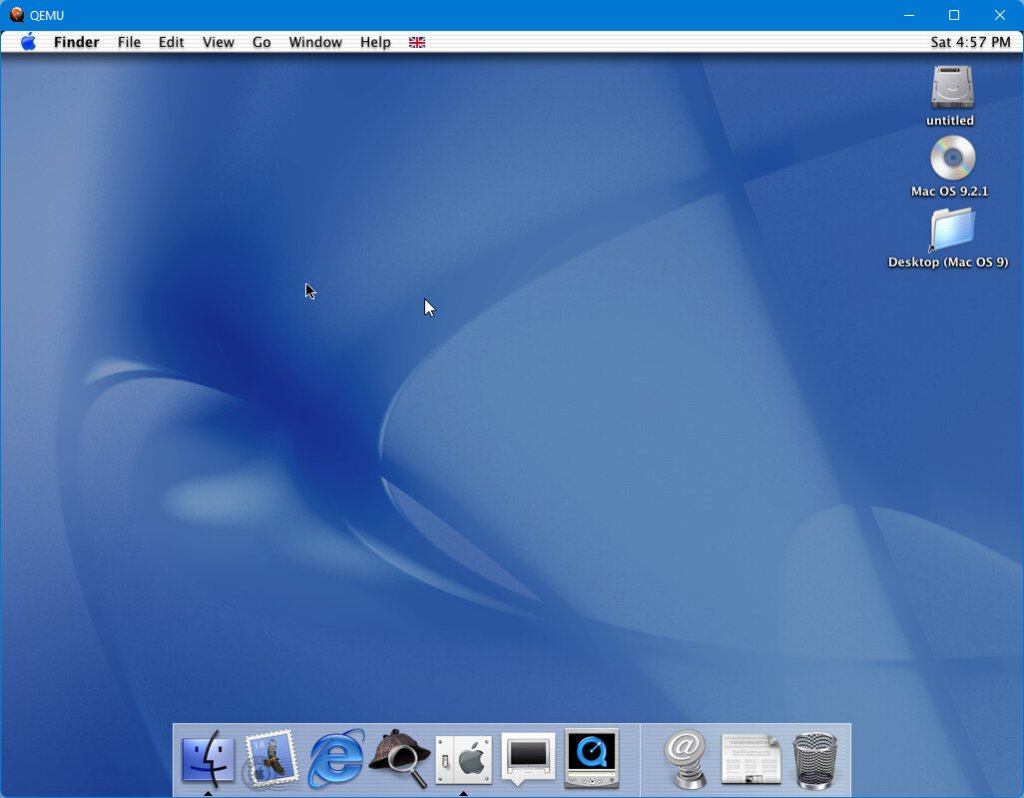
Running in a build of QEMU Here there is limited to no graphics acceleration, no sound support. In QEMU the G3biege switch works best instead of mac99 which still boots but was unable to use the keyboard or mouse, even with the usb/kvm or adb switches.
The emaculation guide recommends using the PPC builds, but I found the screamer/audio builds to work and have sound support (somewhat, it does crackle)
Install
Initially when trying to install, the OS X installer had difficulty locating the QEMU hard disk. This is possible because the disk was a newly created drive and had not been initialized before, and this version of Mac OS X was intended to be installed as an upgrade since many Macs were shipping with a version of OS9 still.
There probably is a way to do this through the command terminal but for now, let’s just boot into a 9.2 CD and initialize the drive from there. I’d recommend installing in conjunction with an OS9 install since you have the benefit of using classic mode.
The desktop is a radical departure from Mac OS 9 and introduces new UI elements like the Aqua design language and the dock, which would be a staple of Mac OS X for years to come.
Finder

The Finder acts very much like Windows Explorer and allows the user to browse the different directories of their system. It’s the main area where applications can be launched (If they’re not in the dock). Like Windows Explorer it has web browser-inspired back and forward buttons, along with view change options and links to commonly used areas like Computer, Home, Favorites and Applications.
What I don’t get is this button on the top right, which compacts the window you have selected by a few pixels. I’m not sure why but given low-resolution screens were common back then maybe it was a product of its time. But then you might as well minimize it to the dock.
Applications
A few applications have been bundled with the OS, some of which come from previous versions of MacOS and some which came from the NEXTSTEP side (Chess)
Clock: Displays a clock in the dock
Mail: The email client for macOS which includes support for Apples .mac email service and AOL
Image Capture: Import photos from your digital camera
Address Book: The contacts area where you can store phone numbers and email addresses for your contacts, these are then accessible from the Mail app
TextEdit: Just your standard text editor
Stickies: A nice feature, that lets you quickly take notes and keep them on your desktop
Internet Explorer

Everybody’s favorite browser is pre-installed with the operating system, a preview release of 5.1 for Mac. This browser uses the Tasman rendering engine in comparison to the Trident engine that the Windows version uses
Sherlock

The main search engine for the operating system. Here you can search for files and folders that are stored on the computer’s hard disks. But you can also search online through various websites split into sections: Internet, Shopping, Articles, reference, and entertainment. None of the search links work any more, and some just open a link to the website which the browser is incapable of rendering.
Quicktime

Apple’s video and multimedia player. This version places channels at the forefront of its interface.
Chess
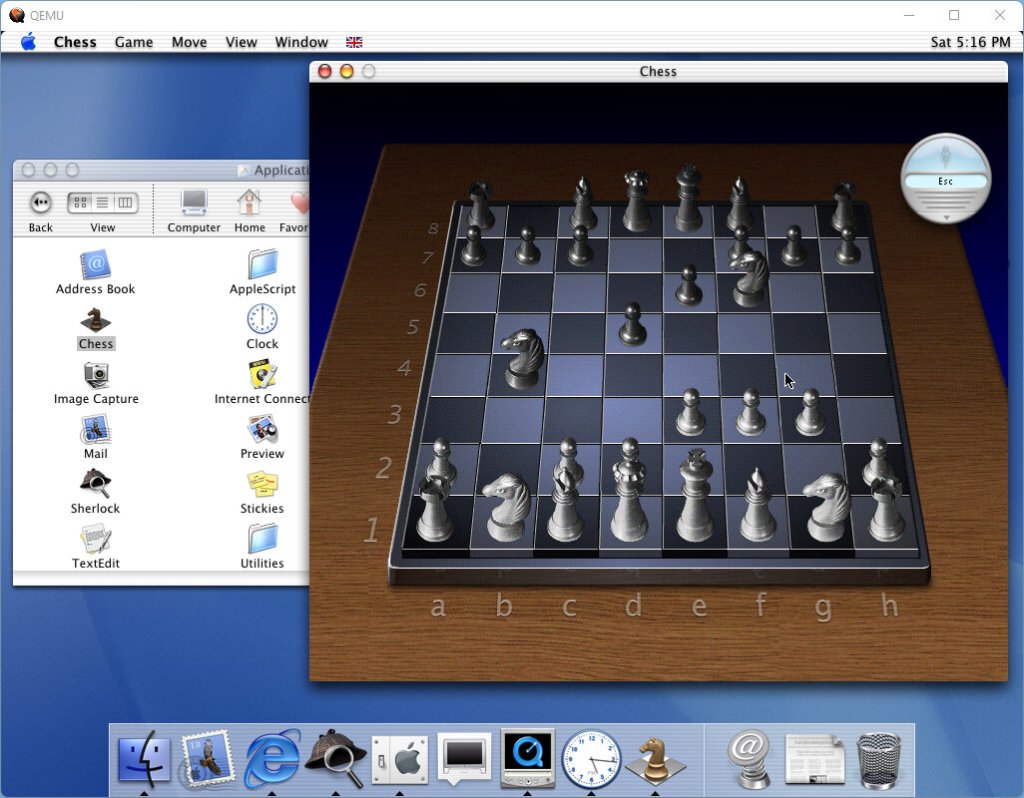
Apple’s chess game originated from the NextStep linage. If only I knew how to play chess

Apple’s new mail client. Sadly no longer compatible with modern protocols.
Stickies
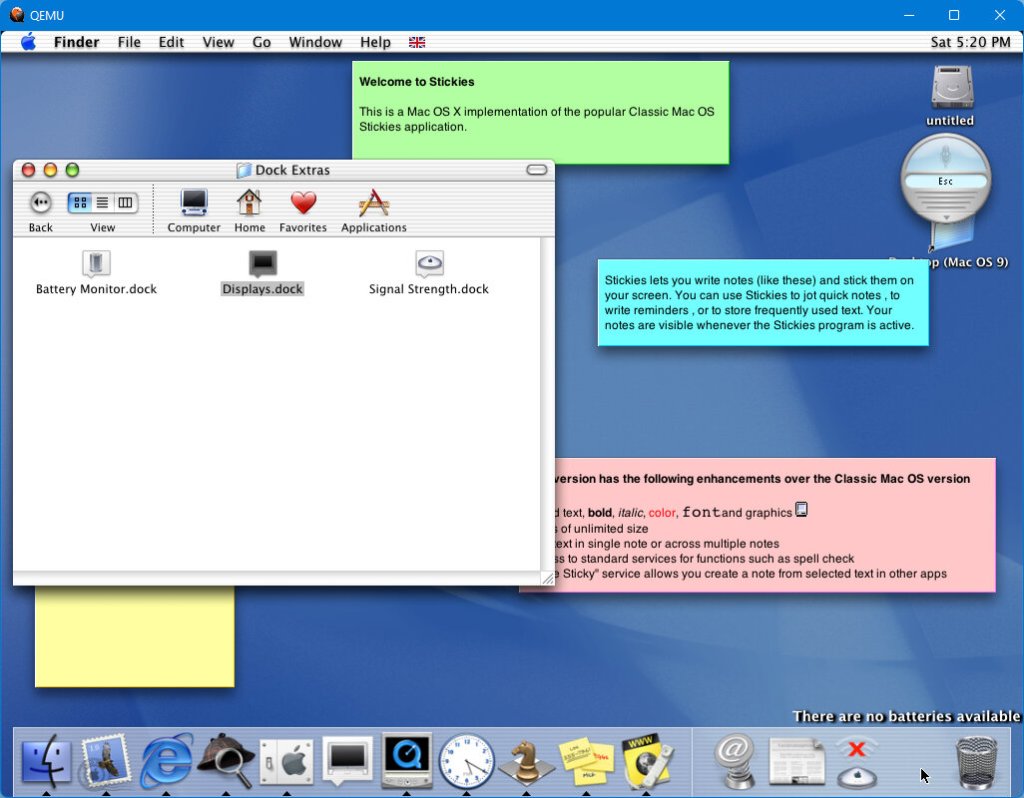
Address Book
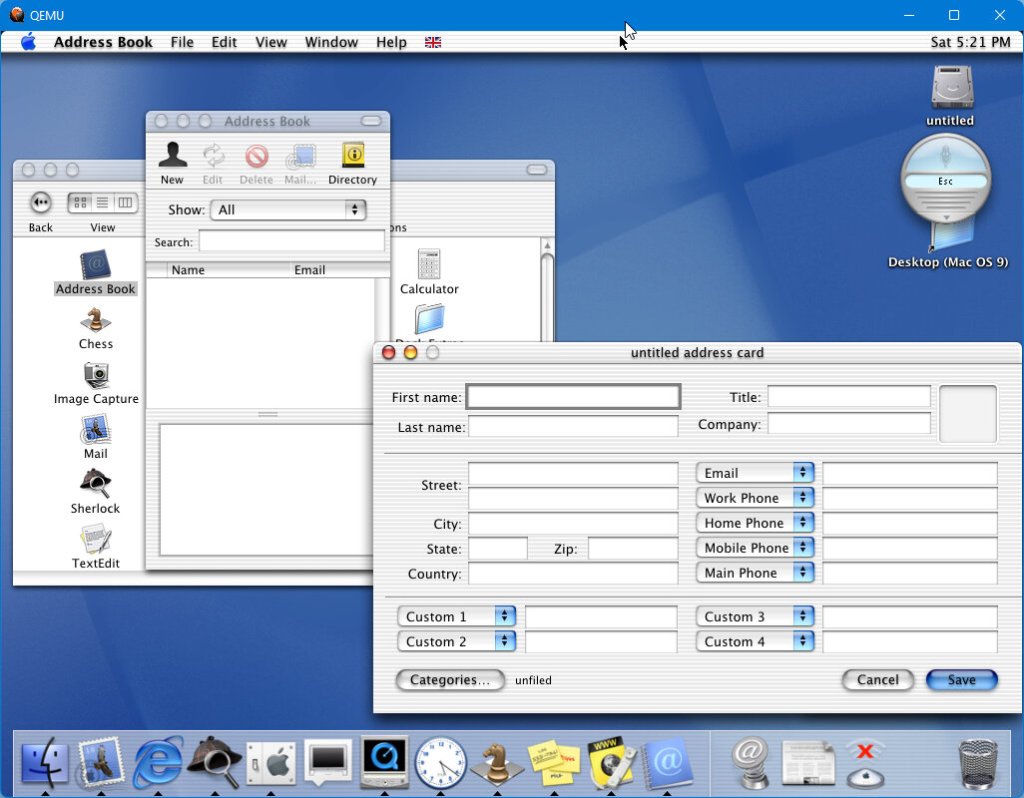
System Preferences
Replacing the control panels area of Mac OS 9, contains most of the systems configuration tools, with the rest being located in the utilities folder.

These don’t run well in QEMU on the count of the low CPU speed and the lack of graphics acceleration.

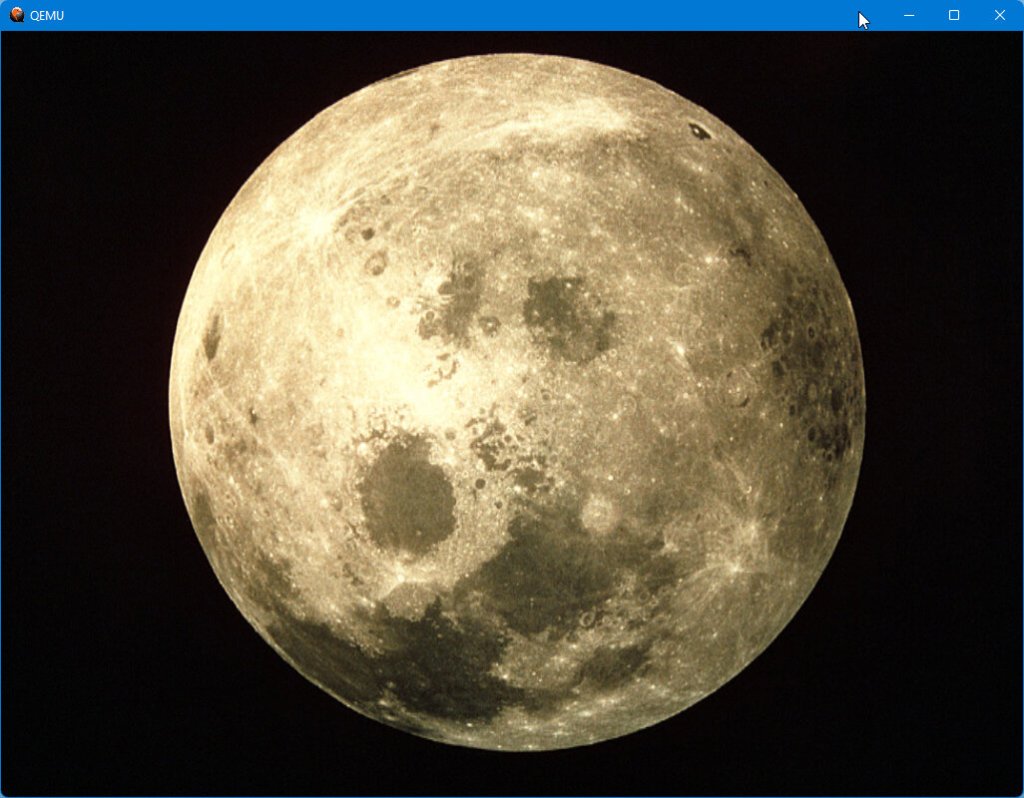
The Cosmos screensaver
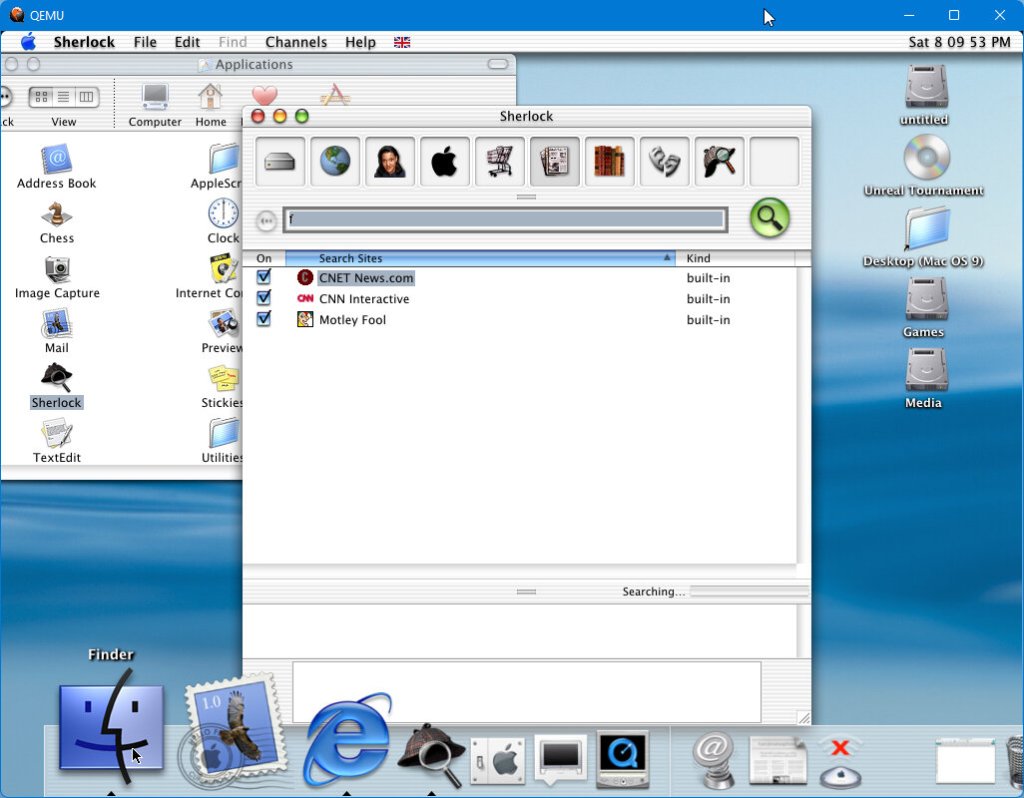
Sherlock looks mostly the same as the OS9 version, this was meant to be the search engine of the operating system with the ability to link to online websites.

Window management in OS X

Networking in OS X, QEMu does provide an ethernet SliRP adaptor
Third Party Software
This was a bit of a disaster since although MacOS has compatibility with Mac OS 9, the classic environment is not installed by default and had to be installed separately, and many apps that were developed for OS X were intended to be used on later releases.
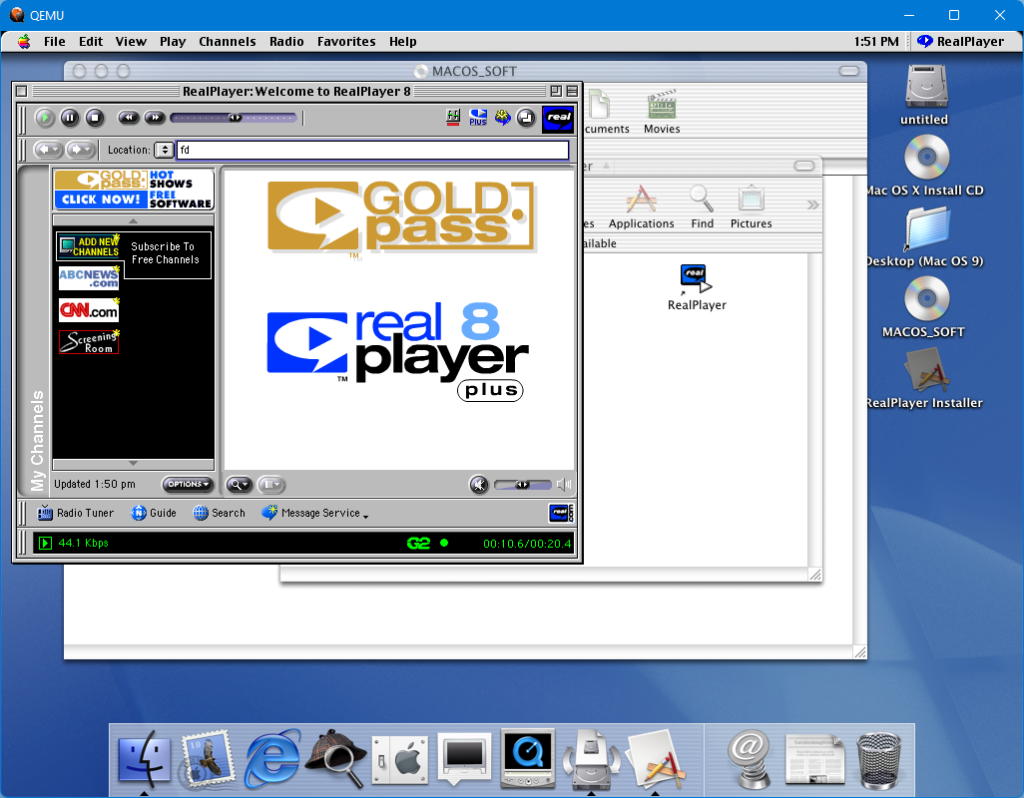
I did get some software to run in both native and classic mode. This wasn’t faultless however as the mouse cursor would frequently disappear when Classic applications were running and only a reboot would get it back. It seems to port the OS 9 UI elements into the OS X display, as the menu bar changes to the OS 9 platinum design when a classic application is active.
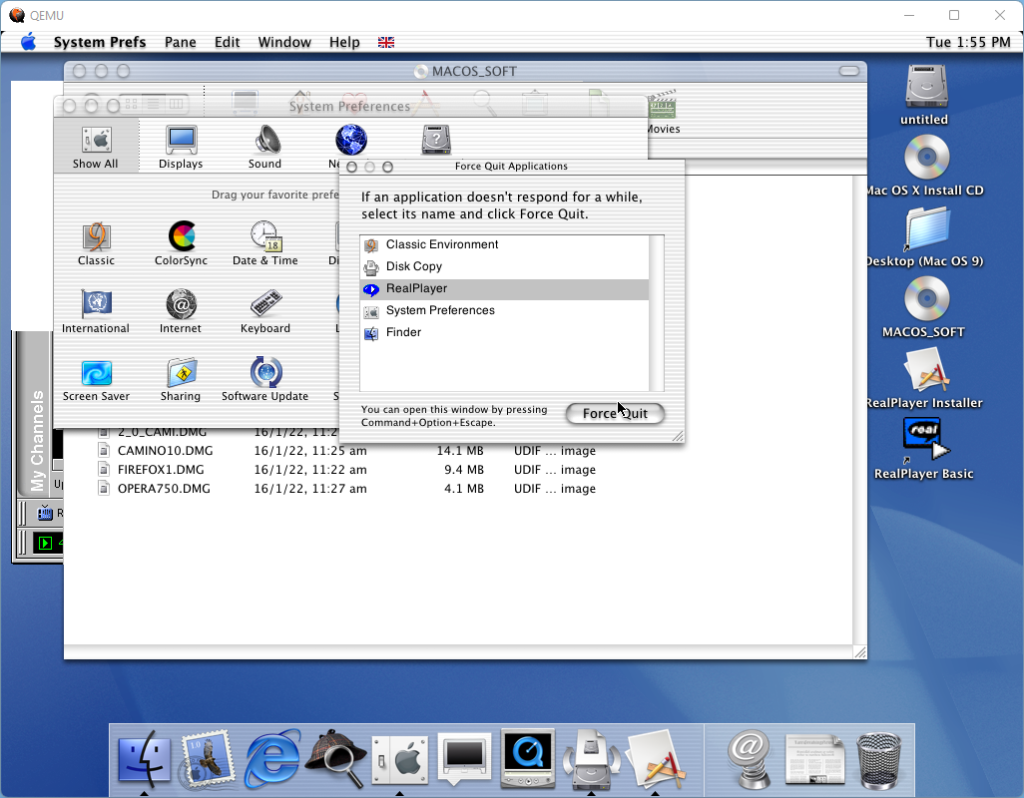
To be fair these are limitations of the old Mac OS kernel since it could not do true multitasking, and with OS X the whole classic layer runs in the same fashion. Should one classic program crash, the others will become unresponsive until the classic mode is restarted which can be done in OS X, whilst the native OS X apps are unaffected.

This does affect the screen rendering, but this could be more due to the emulation rather than the operating system itself, QEMU isn’t 100& accurate. Still it’s better than nothing and was from a time when Apple cared about backward compatibility.

Trying Unreal Tournament didn’t fare any better since this is also a classic Mac application. Trying to run the game with software rendering results in a blank screen, and QEMU must be restarted to get back into the Finder.
The Sims didn’t fare any better since despite being compatible with Mac OS 9, for Mac OS X it requires 10.0.3 update. It is however a carbon application which was a new API that Apple introduced to help with the OS X transition. Carbon applications will run natively in OS X

Conclusion
OS X Cheetah was not received very well since it lacked a majority of features from OS 9, DVD playback was not yet possible and the classic environment was very hit or miss. But the Aqua design was applauded for its style and gave an insight into what the next century of desktop computing would look like. The stability was also well-received that’s to its Unix-like roots, but at the cost of performance. Users would continue to run OS9 and Apple never shipped it as a default OS (at least to my knowledge). Then again Microsoft did the same for its Windows NT line of operating systems. Whilst they were stable, lacked the compatibility and performance offered for gaming or low-end hardware.
Cheetah was short-lived on the market and was replaced with Puma in the same year as a free upgrade. Today there isn’t much reason to run Cheetah except for historical interest.
